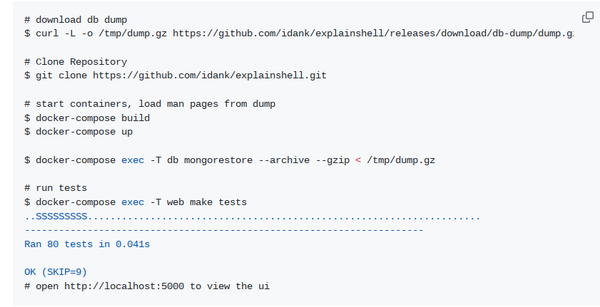Explainshell – A New Use for Man Pages
A More Modern Man Page

Photo by Brett Jordan on Unsplash
Explainshell aims to make documentation more accessible.
Man pages are the most common form of documentation for Linux. However, they first appeared in 1971, designed for a small audience of experts. As a result, while they generally provide an exhaustively thorough summary of their topics, from a modern perspective, they can have several limitations. Their thoroughness can be intimidating for new users, and some contain numerous options, many of which are obscure because they are not frequently combined. Nor do they always cover which multiple commands are combined through pipes or joined by regular expressions and notations unique to a particular programming language. Consequently, recent years have seen attempts to address these limitations. For instance, tldr provides quick references for the most common use cases of commands. More recently, explainshell has appeared, an online resource that parses commands like high school English classes parse sentences. By doing so, it provides a quick reference to complicated commands, as well as a useful learning tool. If you have ever wondered about the commands for installing software without a package system are about, explainshell can be especially useful. It can also be a handy way to check the validity of commands or Bash scripts.
Explainshell was written by Idan Kamara as part of an ongoing effort to make documentation more accessible. It is based on 29,761 man pages from Ubuntu. As the project's GitHub page explains, explainshell uses Python scripts to convert these pages to HTML, then classifies each paragraph as an option or not. Options are then extracted and stored, and matched to the relevant help text. When a query is made, it is parsed into an Abstract Syntax Tree (AST), and explainshell notes likely relevant commands or shell-related nodes such as pipes. The results are rendered using Flask, a lightweight web application for Python, that makes for quick results. Currently, there is no way to enter any additional man pages, although the GitHub page suggests that might be possible in the future, and it is an obvious way for a small project to grow. The GitHub page also includes instructions about how to install a local version of explainshell using Docker (Figure 1), as well as how to parse and save a gzipped man page in raw format (Figure 2).
[...]
Buy Linux Magazine
Subscribe to our Linux Newsletters
Find Linux and Open Source Jobs
Subscribe to our ADMIN Newsletters
Support Our Work
Linux Magazine content is made possible with support from readers like you. Please consider contributing when you’ve found an article to be beneficial.

News
-
Parrot OS Switches to KDE Plasma Desktop
Yet another distro is making the move to the KDE Plasma desktop.
-
TUXEDO Announces Gemini 17
TUXEDO Computers has released the fourth generation of its Gemini laptop with plenty of updates.
-
Two New Distros Adopt Enlightenment
MX Moksha and AV Linux 25 join ranks with Bodhi Linux and embrace the Enlightenment desktop.
-
Solus Linux 4.8 Removes Python 2
Solus Linux 4.8 has been released with the latest Linux kernel, updated desktops, and a key removal.
-
Zorin OS 18 Hits over a Million Downloads
If you doubt Linux isn't gaining popularity, you only have to look at Zorin OS's download numbers.
-
TUXEDO Computers Scraps Snapdragon X1E-Based Laptop
Due to issues with a Snapdragon CPU, TUXEDO Computers has cancelled its plans to release a laptop based on this elite hardware.
-
Debian Unleashes Debian Libre Live
Debian Libre Live keeps your machine free of proprietary software.
-
Valve Announces Pending Release of Steam Machine
Shout it to the heavens: Steam Machine, powered by Linux, is set to arrive in 2026.
-
Happy Birthday, ADMIN Magazine!
ADMIN is celebrating its 15th anniversary with issue #90.
-
Another Linux Malware Discovered
Russian hackers use Hyper-V to hide malware within Linux virtual machines.


